Prepping for spring fire season
By KATHLEEN LAVEY
Michigan Department of Natural Resources
Look out the window. Depending on where you are in Michigan, you might see tentative green grass, monumental spring mud or a stubborn layer of snow.
In any case, make no mistake: Michigan’s wildland fire season is on.
“Even though there’s snow on the ground in parts of the state now, some local fire departments have already started running wildland fires,” said Paul Rogers, fire prevention specialist for the Michigan Department of Natural Resources.
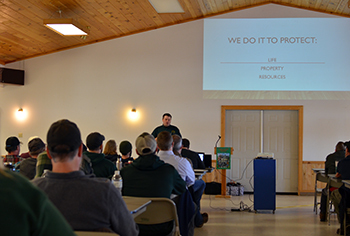
Rogers and other fire-qualified staff in DNR’s Forest Resources Division met last week to discuss the outlook for this season and develop plans to keep Michigan’s people and forests safe from the threat of wildfire. The season generally begins in early spring, ending with winter snowfall.
DNR firefighters and equipment are stationed strategically across the state to protect Michigan’s 20 million acres of forest land, which includes nearly 4 million acres of state forest.
The season generally begins in early spring, with the highest danger in spring and early summer. Risk lessens somewhat as trees “green up,” or bring sap up from their roots, in summer.
Because of Michigan’s wetter climate, the state rarely sees fires as vast or long-lasting as the fires they assist with in western states.
|
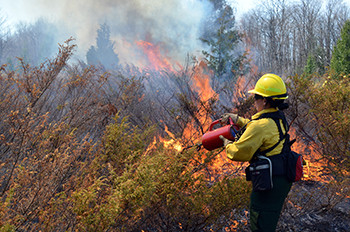
During 2021, Michigan’s largest fire was the Brittle Fire, about 5,600 acres in the northeastern Lower Peninsula on federal land. Prior to that, the most recent large fire was the Duck Lake Fire that started with a lightning strike in May 2012 north of Newberry in the Upper Peninsula. It burned 21,135 acres in three weeks’ time.
Those large fires are rare and the exception to the DNR’s goal – put out wildland fires as quickly as possible, while they’re still under 10 acres in size.
During 2021, DNR firefighters battled fires on 2,379 acres and conducted prescribed burns on about 5,100 acres. Prescribed burns are carefully planned fires that mimic the effect of natural fire on the landscape. They are used to improve habitat for wildlife and remove invasive species.
Despite mud and snow, prescribed burns are likely to start this month.
|
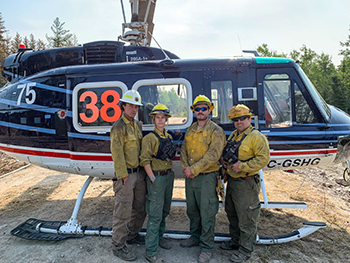
In addition, the spring danger of wildland fire from natural or human causes is very real.
“Last year was probably one of the busier springs we’ve had in a long time,” said Jeff Vasher, fire specialist in Roscommon. “It was really dry, and we started really early. Our unit started running fires on March 13 and went into June.”
This year may pose similar challenges.
“We didn’t get a lot of snow this year, and the vegetation from last year is still standing up,” he said. “That makes it rough for us, because when it stands up like that it dries out quicker and it burns a lot faster.”
Even though the ground may be saturated with water, grasses that have been dormant through the winter are dried out and burn quickly.
This means that people need to be very careful and check to see if the DNR is issuing burn permits prior to burning yard waste or other allowed materials.
“Always check on the status of burn permits with your local fire department or with the DNR before you start burning,” Rogers said. “Always check the weather. If it’s windy, dry and warm, do not burn. A fire can escape very quickly under those conditions."
|
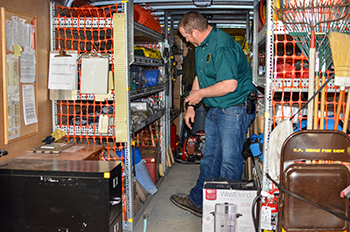
Before burning yard waste, go to Michigan.gov/BurnPermit to make sure weather conditions allow.
Some additional important fire safety tips include:
- Never leave a campfire, bonfire or yard waste fire unattended.
- Always keep a shovel, metal bucket and water source nearby.
- When finished with your fire, douse it thoroughly with water, stir the ashes and douse again. Repeat until cool.
- Your fire should be at least 10 feet away from logs, stumps or debris. Remember to make sure no branches are hanging overhead.
- Do not burn on windy days or during periods of dry weather.
- Consider composting yard waste instead of burning.
- If the fire escapes your burn barrel or designated area, call for help immediately.
Another thing to think about in springtime is keeping homes safe from wildfires.
- Homeowners can make their homes less susceptible to wildfire by taking some simple steps towards Firewise landscaping:
- Create a “fire-free” area around your home. Trim branches, mow the lawn regularly and remove dead vegetation near the home.
- Use non-flammable landscaping materials and plants with a high moisture content. Water plants, trees and mulch regularly.
- Create “fuel breaks”, like driveways and walkways, in your yard.
|
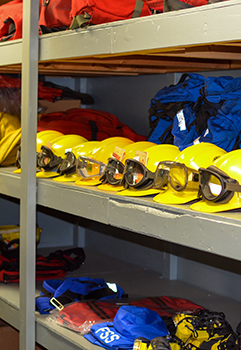
Throughout spring, summer and fall, DNR fire managers have a phone call every Thursday to discuss the weather forecast and the risk of fire in each area of the state. If needed, they’ll move staff around geographically to meet expected needs.
“We’re ready for the season,” Vasher said. “The tactics meetings get us started. It’s to get your mind set that fire season is coming, that your equipment is ready, that you have everything you need for the year.”
Check out previous Showcasing the DNR stories in our archive at Michigan.gov/DNRStories. To subscribe to upcoming Showcasing articles, sign up for free email delivery at Michigan.gov/DNR.
|
Note to editors: Contact: John Pepin, Showcasing the DNR series editor, 906-226-1352. Accompanying photos and a text-only version of this story are available below for download. Caption information follows. Credit Michigan Department of Natural Resources, unless otherwise noted.
Text-only version - Showcasing - Fire Season
Atlanta: Michigan Department of Natural Resources firefighters responded to this fire off Canada Creek Highway in the Atlanta Forest Management Unit in May 2021. Michigan’s fire season begins in spring, and DNR firefighters are ready for it.
Helicopter: When Michigan’s fire season is less busy later in the summer, Michigan Department of Natural Resources firefighters often help put out wildfires in other locales. This DNR crew was working with an international team to battle wildfires in Manitoba in 2021. From left, Steve Schummer, Courtney Moore, Doug Tyran and Matt Tonello.
Prescribed: Firefighters led by the Michigan Department of Natural Resources conducted a prescribed burn May 8, 2018, at Fayette Historic State Park in Delta County. This was the first time a fire was burned by the DNR for historical purposes, that being to reopen what would have been the infield of the half-mile, oval-shaped horse racing track.
Spring: Scott Lakosky of the Michigan Department of Natural Resources provides instruction and refresher information at the 2017 Upper Peninsula spring tactics meeting at American Legion Post 131 in Munising.
Supply: Wildland firefighting supplies stored at the ready at the Michigan Department of Natural Resources Incident Coordination Center in Marquette.
Trailer: Keith Murphy inventories the cache of equipment inside the mobile trailer that supports an Upper Peninsula Michigan Department of Natural Resources incident management team when it rolls out on an incident like a wildfire.
|